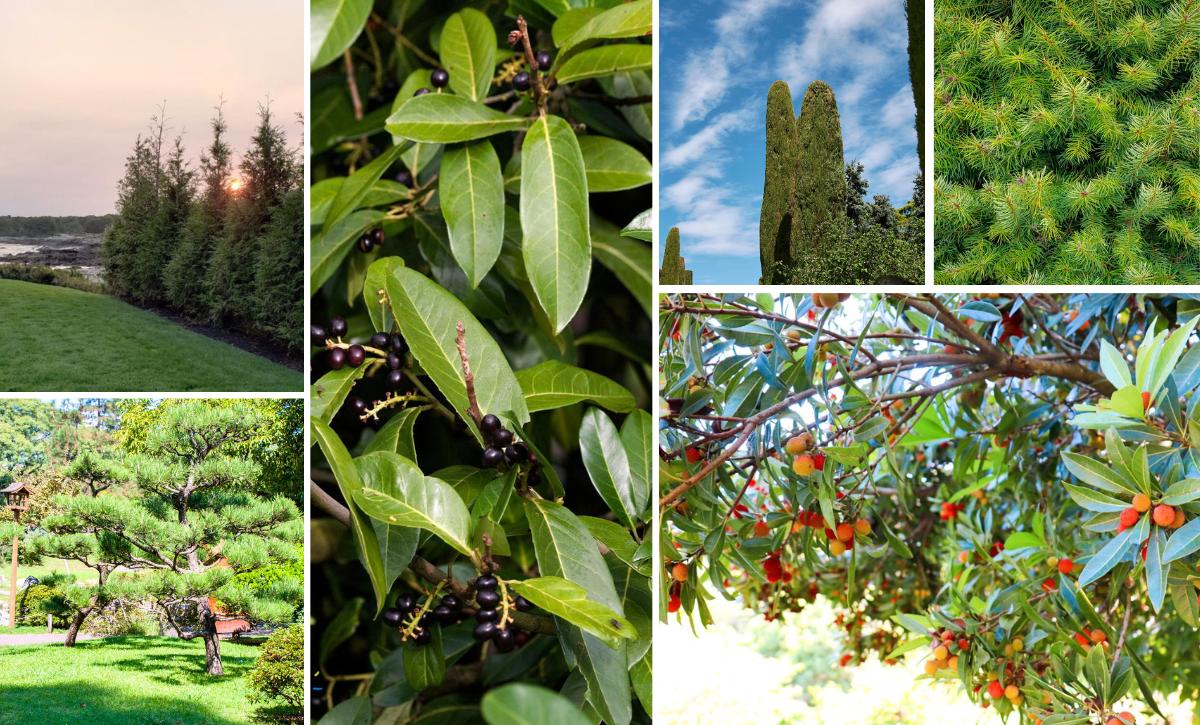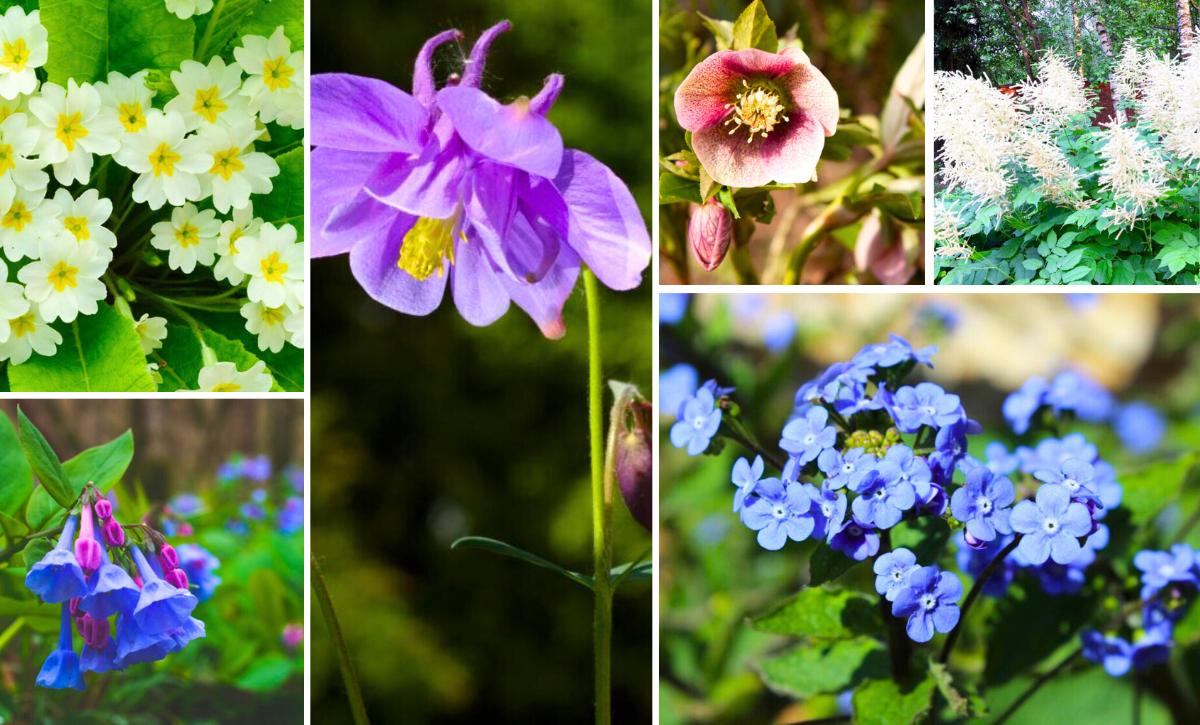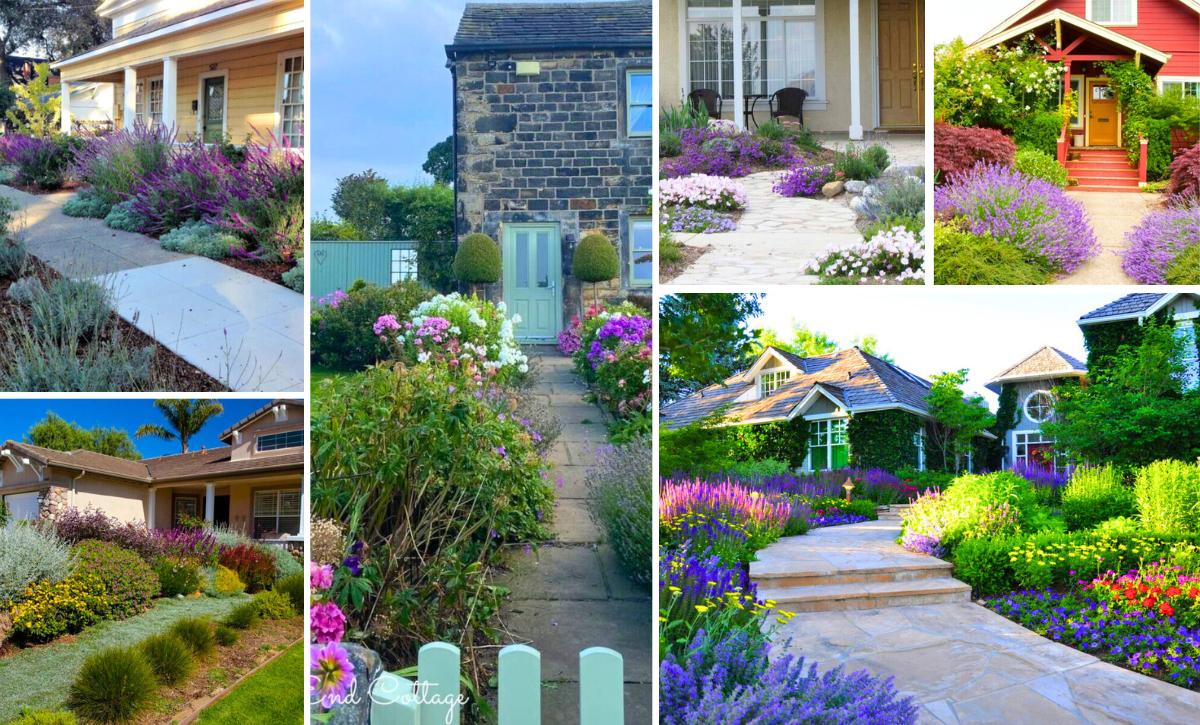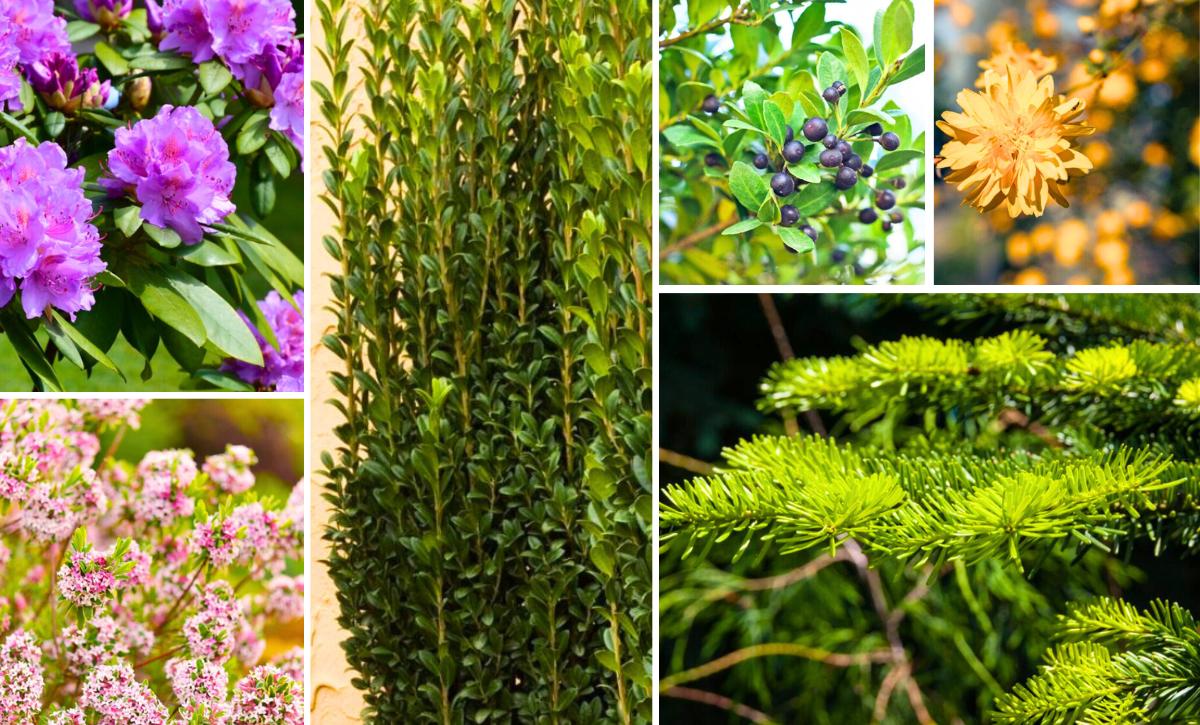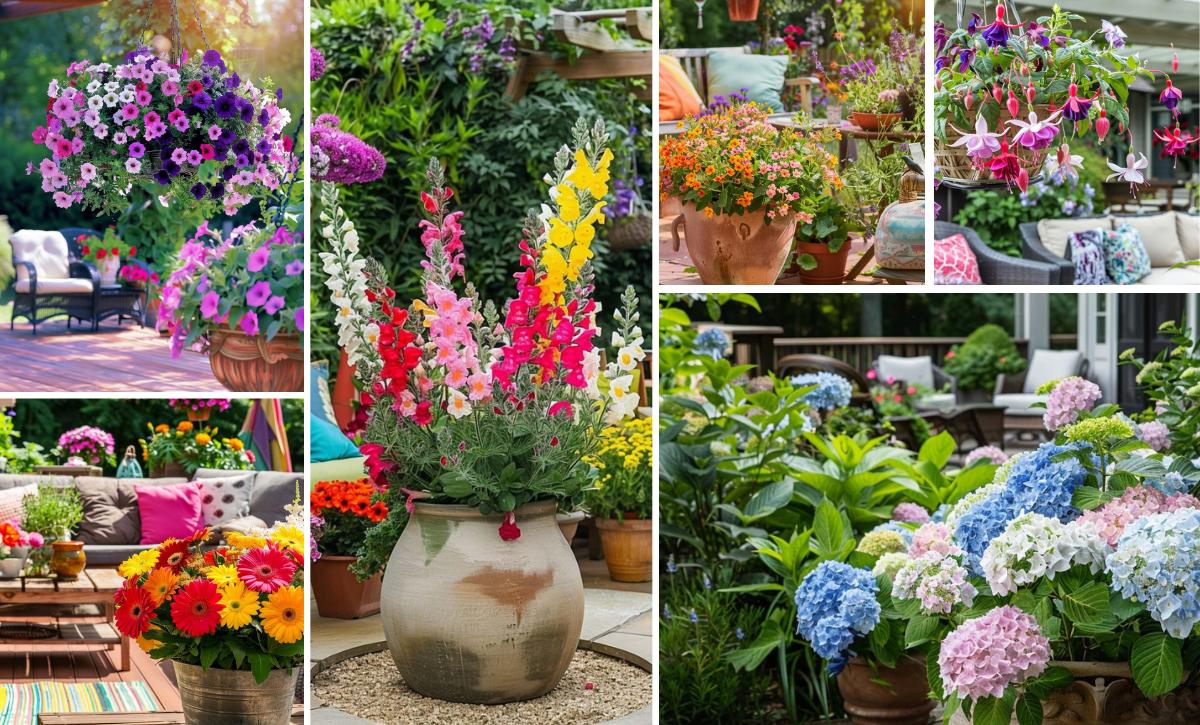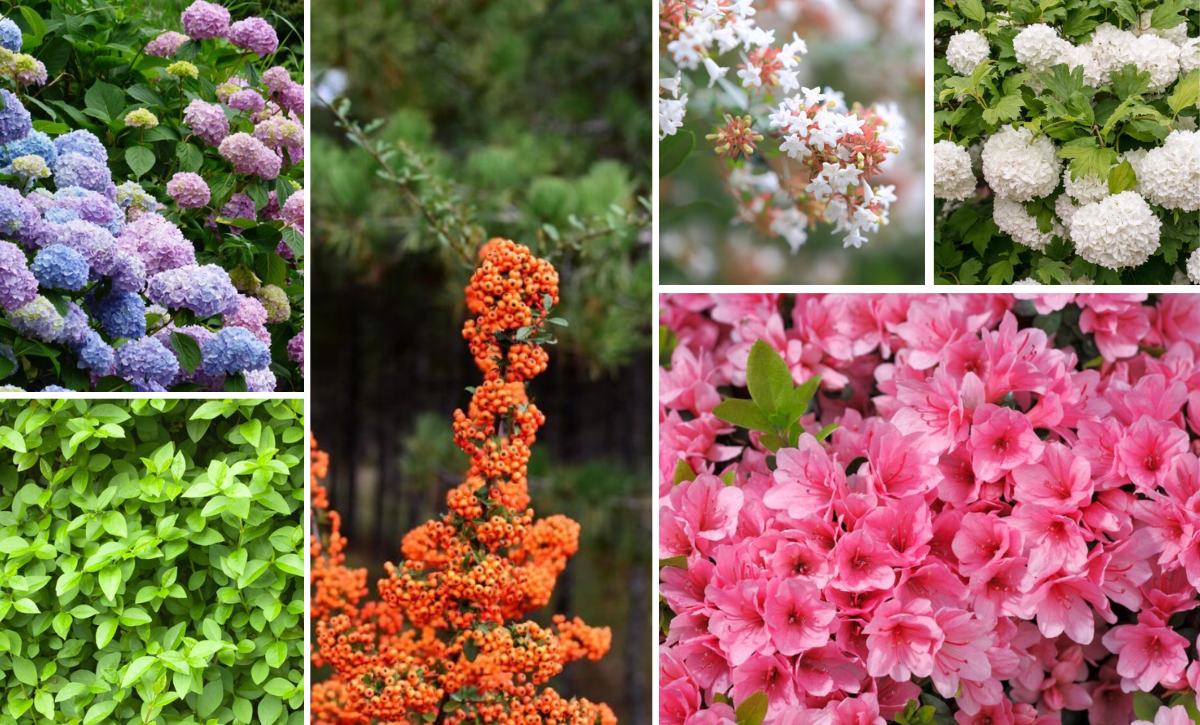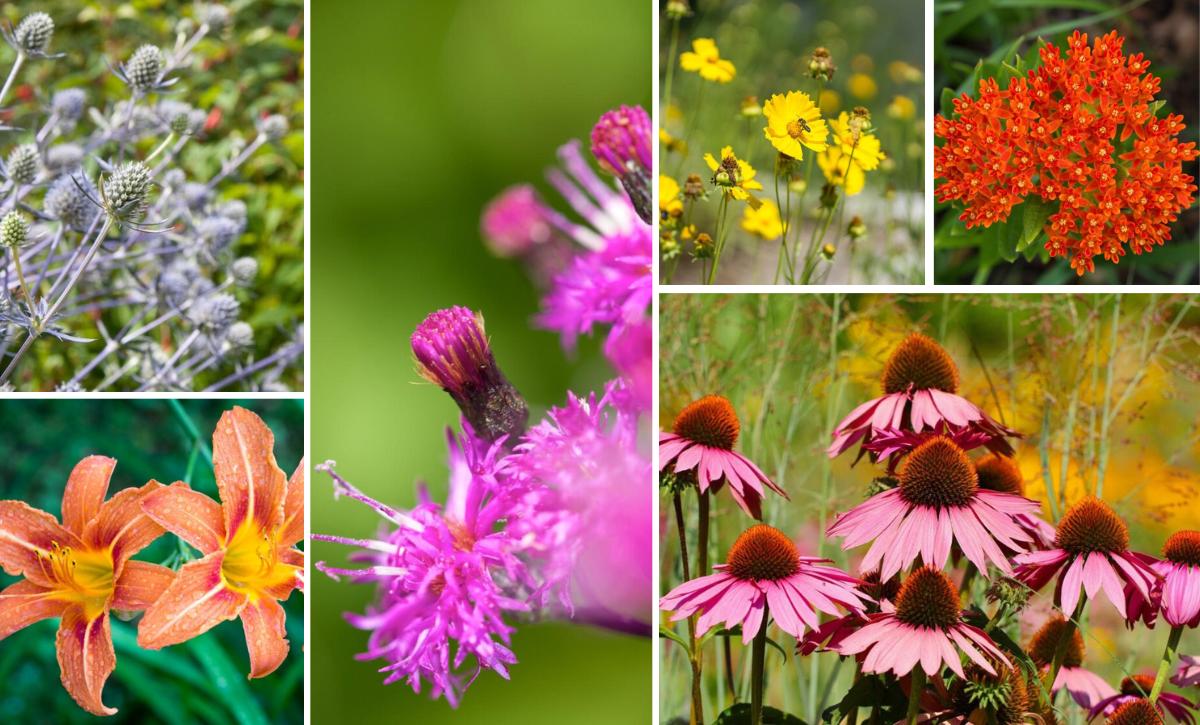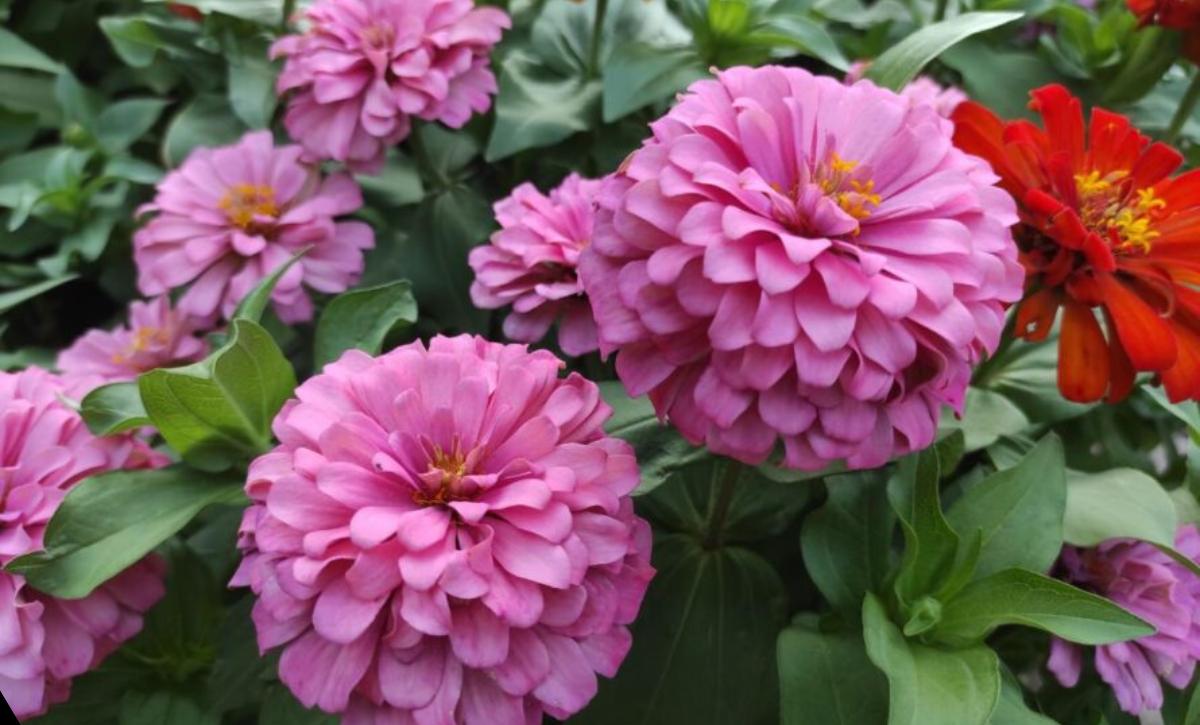Welcome the warm weather with a colorful carpet of blooming flowers! Here is a selection of 25 early spring flowers that will resemble their magnificent blossoms as soon as the weather gets warmer.

And since spring can be unpredictable, all of them are hardy to cope with the changes. From low-growing ground covers to bushes, our collection is sure to make your spring anticipation stronger!
1. Bleeding Heart (Lamprocapnos spectabilis)
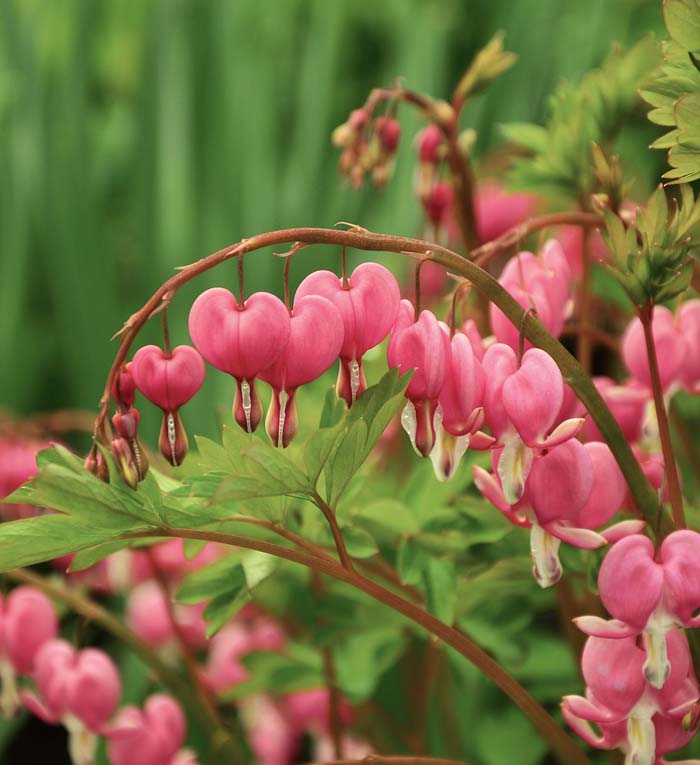
- USDA Growing Zones: 2 to 9
- Color Varieties: Pink, red, white
- Sun Exposure: Part shade
- Soil Needs: Moist, rich, well-drained
Lamprocapnos spectabilis, also known as Bleeding Heart, has inclining branches like arms that hold rows of dangling pink or red heart-shaped blossoms. At the bottom, the blossom splits to reveal a white teardrop tingled with yellow.
The bleeding heart likes full sun to partial shade, neutral pH soil and good drainage. For a more impressive garden effect, plant many of these specimens next to each other to grow together like a shrub.
2. Bloodroot (Sanguinaria canadensis)
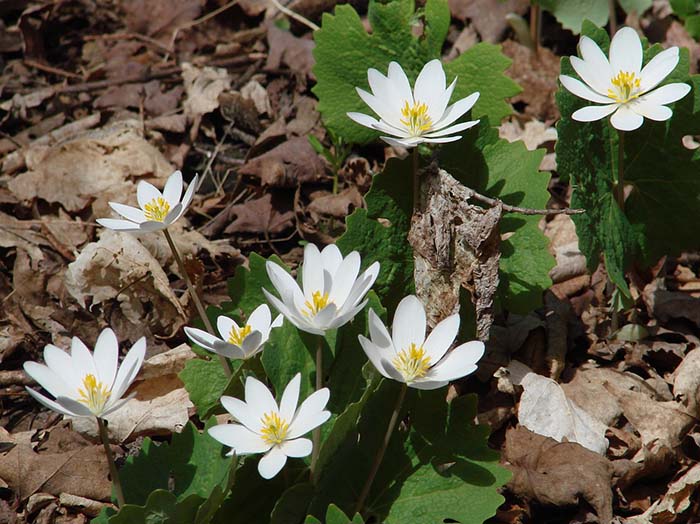
- USDA Growing Zones: 3 to 8
- Color Varieties: White or pale pink petals with yellow centers
- Sun Exposure: Full to part shade
- Soil Needs: Rich, well-drained, acidic
The gentle white blossoms of the Bloodroot bloom close to the ground but their bright color easily catches the eye. Wonder where it has taken its name? From the red liquid that oozes out of the root when it is cut.
Considered more a ground cover, this plant requires minimal care and is not aggressive as others in this flower family. Once the blossoms fade away, the rich green foliage remains to cheer with the natural carpet it has created. Note that this plant is highly toxic so plan well its location in the garden.
When you see that the white blossoms of the Bloodroot reveal, then you must be sure that warmer weather is soon to come.
3. Siberian Bugloss or False Forget-Me-Not (Brunnera macrophylla)
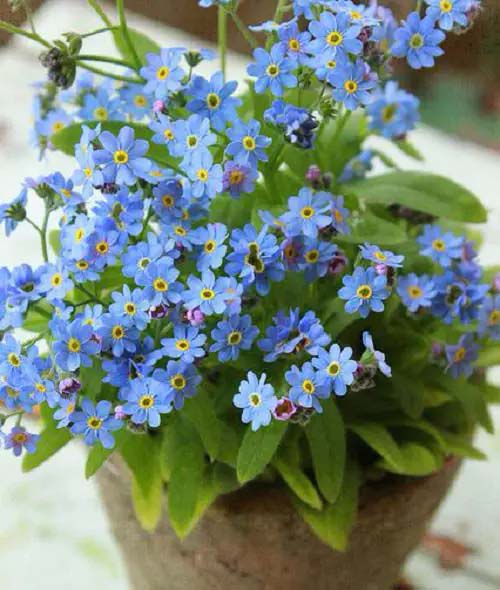
- USDA Growing Zones: 3 to 8
- Color Varieties: Blue
- Sun Exposure: Part shade
- Soil Needs: Rich, moist, well-drained
This is an easy plant to take care of and it is certainly one of the greatest spring-blooming kinds because of its impressive foliage and more impressive tiny blue-colored flowers.
It grows in the early spring and blooms until late summer if you maintain it right. When the leaves get tattered, just cut them back to make place for new ones.
4. Hellebore (Helleborus spp.)
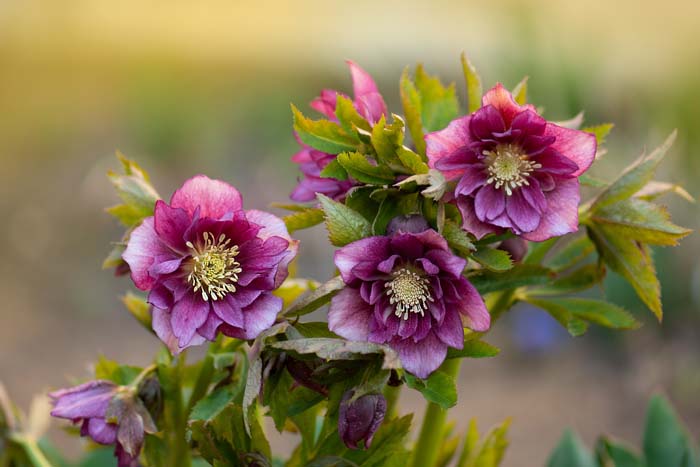
- USDA Growing Zones: 4 to 9 (varies by species)
- Color Varieties: Pink, dark purple, maroon, white, yellow, cream, bi-colored
- Sun Exposure: Part shade to full shade
- Soil Needs: Rich, moist, well-drained
Hellebore is one of the winter-resistant spring-blooming kinds. It is an evergreen and dear-resistant perennial that grows slow. It may take up to a few years for seed-grown plants to bloom but we promise patience is worth it as you will enjoy blossoms at the end of winter, sometimes even when there is snow.
When you first get your Hellebore seeds, you can choose from white and yellow to pink and purple colors of the blossoms.
Choose a place that is sheltered from strong winds and part to full shade. Soil shall be organically rich and well-draining.
5. Lungwort (Pulmonaria spp.)
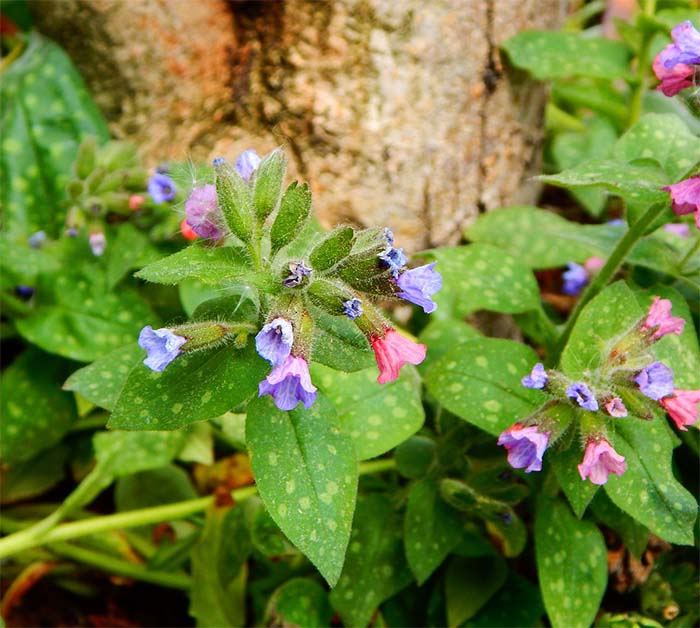
- USDA Growing Zones: 4 to 9
- Color Varieties: White, pink, blue
- Sun Exposure: Part shade to full shade
- Soil Needs: Rich, well-drained
Maintaining even moisture of the soil is the key to enjoying the bell-like blossoms of the Lungwort. The impressive thick foliage consisting of spear-shaped leaves with white and silver splashes covers a relatively tall sprig ending with a group of blossoms.
While you admire your Lungwort every day in the early spring, you may notice that the white or pink flowers have turned blue. This is one of endless Mother Nature miracles- once the blossoms are pollinated, they show it with the new color.
6. Creeping Phlox (Phlox subulata)
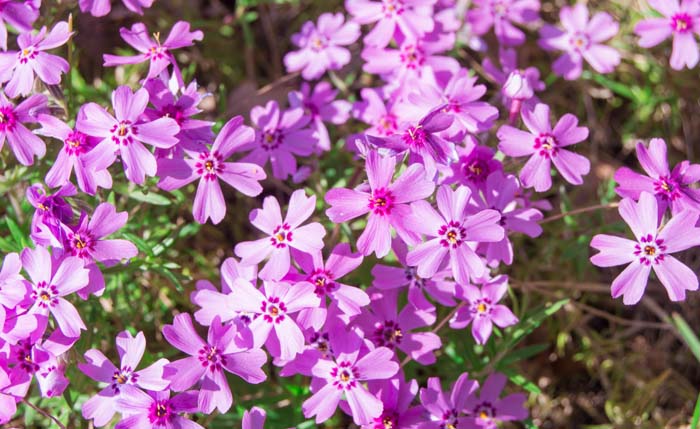
- USDA Growing Zones: 3 to 9
- Color Variations: Pink, red, white, purple
- Sun Exposure: Full sun to part shade
- Soil Needs: Rich, evenly moist, well-drained
Creeping phlox is a wildflower that creates an amazing lilac-colored carpet. The tiny blossoms reveal over tall sprigs with needle-like leaves.
Also known as moss phlox, it makes an eye-catching formation when planted in large masses. You can get seeds that bloom in pastel colors, deep pink and snowy white.
Plant in rich and well-drained soil where the sun generously shines over. The care for this early spring-blooming flower consists of cleaning the weeds often.
7. Pigsqueak (Bergenia cordifolia)
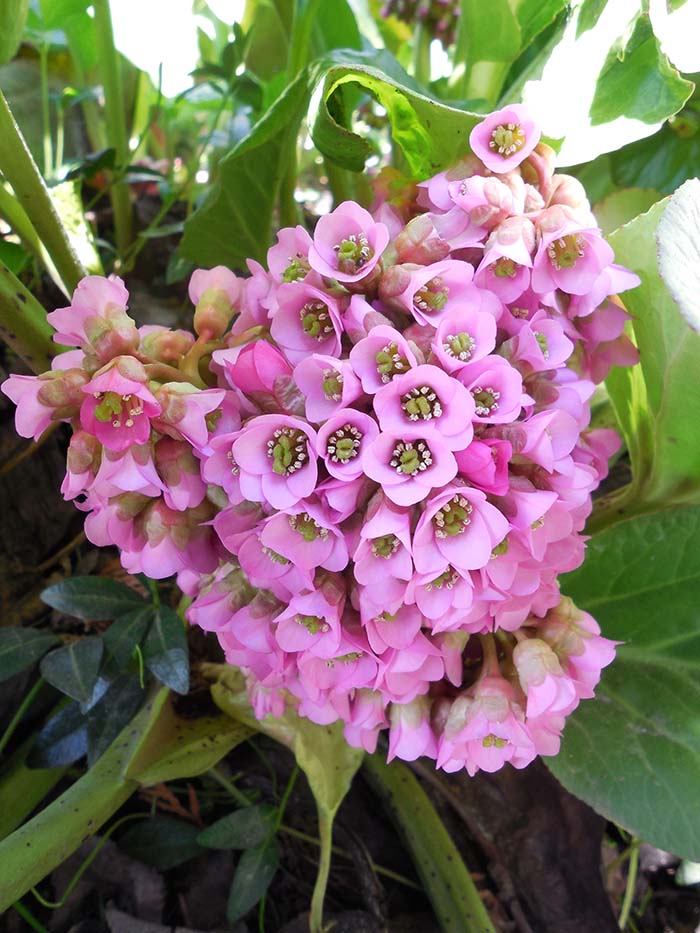
- USDA Growing Zones: 4 to 8
- Color Variations: Pink, white, red, violet
- Sun Exposure: Full to part shade
- Soil Needs: Rich, moist, well-drained
This tall flower showcases shiny heart-shaped leaves arranged in rosettes remaining attractive all spring long. You may be wondering why this beautiful flower is known as pig squeak. It is from the sound the leaves make when you rub them.
The blossoms are dark pink and tiny forming a giant cluster. The plant usually grows in dense clumps from seeds or rhizomes. Plant in a shady garden zone where the soil is rich and well-drained.
8. Primrose (Primula spp.)
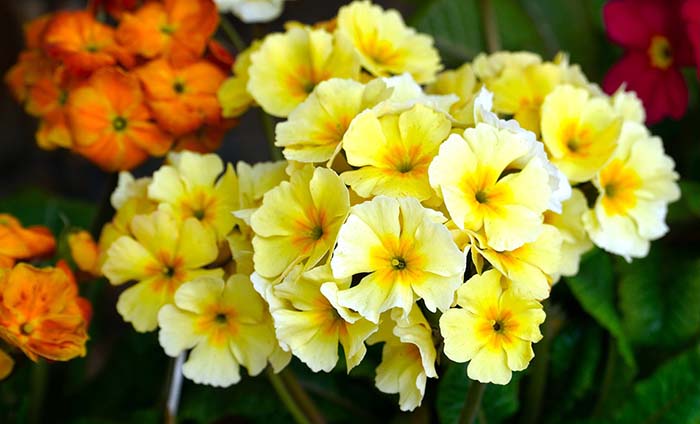
- USDA Growing Zones: 4 to 8
- Color Varieties: White, yellow, red, amber-orange, pink, purple, several bicolored varieties
- Sun Exposure: Partial shade
- Soil Needs: Rich, moist, well-drained, slightly acidic
Primula is a valued plant kind because of its ornamental flowers. You can enjoy a variety of bloom colors in autumn and the spring afterward.
Primrose looks best when planted in large clumps. The basal rosettes of evergreen leaves will cheer you in winter and once the temperature gets higher the small blooms will appear. When you choose the best place for your primula kind, make sure that the soil is not heavy and too rich. Water often and make sure that it drains well.
9. Solomon’s Seal (Polygonatum spp.)
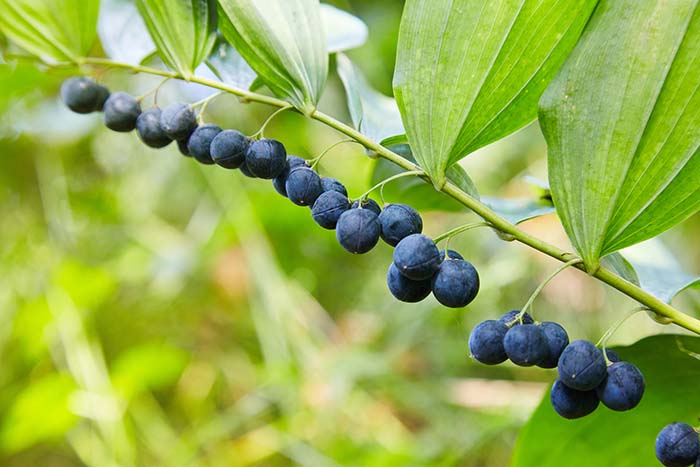
- USDA Growing Zones: 3 to 7
- Color Varieties: White, pink, green
- Sun Exposure: Part shade to full shade
- Soil Needs: Rich, moist, neutral to slightly acidic
Solomon’s seal impresses with the clusters of dangling flowers hanging from an arm-like sprig. Once the bell-shaped white blossoms fade away, glossy black seeds replace them.
They fall on the ground to self-plant for the next year. Solomon’s seal is one of the first spring-blooming flowers which prefers partial to full shade and regular watering.
10. Twinleaf (Jeffersonia diphylla)
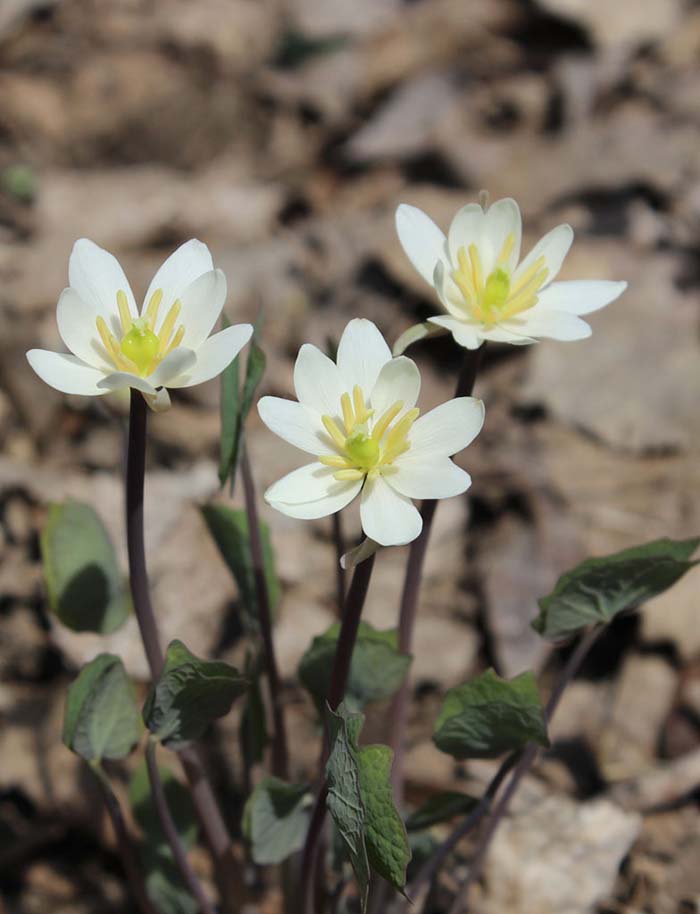
- USDA Growing Zones: 5 to 7
- Color Varieties: White
- Sun Exposure: Part shade, tolerates full shade
- Soil Needs: Rich, moist, well-drained
Many people confuse the Twinleaf with the Bloodroot. Although their blossoms look similar, the Twinleaf blooms on a taller stem and reveals smaller and darker leaves.
It originates from North America and grows very well in partial to full shade. It loves moisturized and cool soil so you can cover the soil with a layer of mulch to maintain these conditions.
Wonder where Jeffersonia diphylla other name comes from? It comes from the number of leaves at the bottom of the stem forming two sets of two leaves positioned in the shape of butterfly wings.
via Prairie Moon
11. Virginia Bluebells (Mertensia virginica)
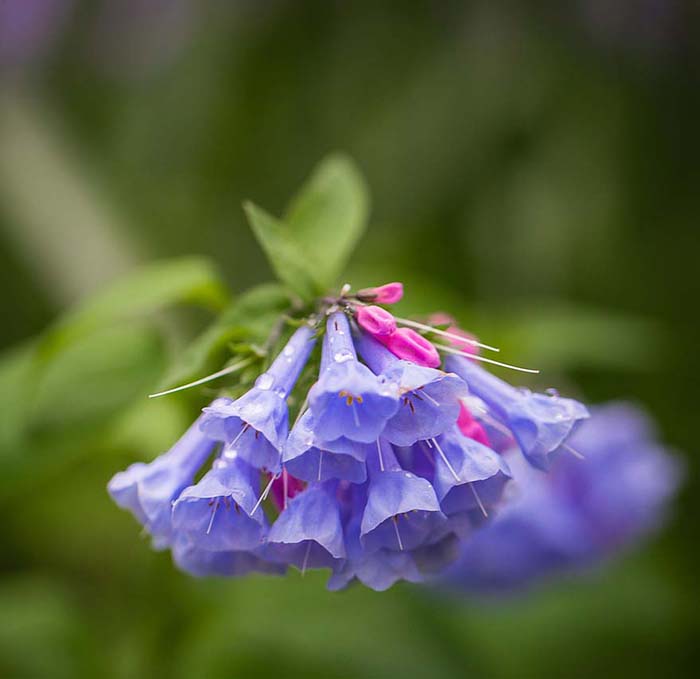
- USDA Growing Zones: 3 to 8
- Color Varieties: White, lavender, pink
- Sun Exposure: Part shade to full shade
- Soil Needs: Evenly moist, well-drained, sandy
This flower is one of the earliest spring plants which fascinates with the magical change in the color of its blossoms.
They start as pink buds that become blue later when they mature. The bell-like flowers form a cluster that is so heavy for the stem that it bends downwards. The bluebell is a perennial flower that disappears shortly after it blooms. Nevertheless, it is one of the most loved flowers known as a sign of spring coming.
12. Wood Lily (Trillium grandiflorum)
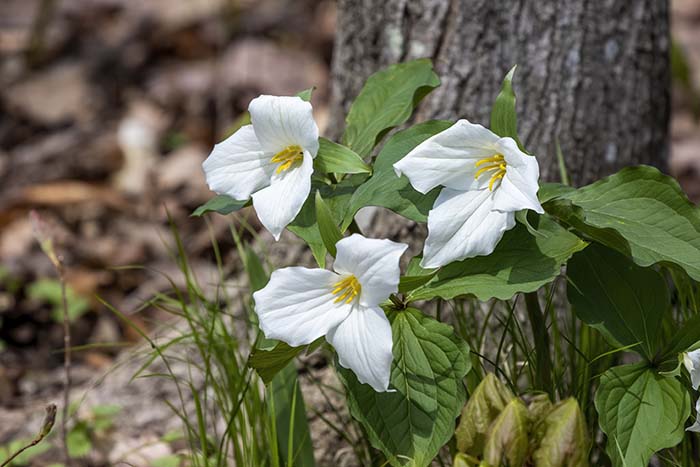
- USDA Growing Zones: 4 to 8
- Color Varieties: White
- Sun Exposure: Part shade to full shade
- Soil Needs: Rich, moist, well-drained
White Trillium is a spring flower blooming with large and long-lasting blossoms. The stem of this noticeable plant is surrounded by three large ovate leaves.
The flower begins to bloom in April and lasts till summer when the blossoms age and turn pale pink. Wood Lily loves shady places and rich soil. It is the most popular plant choice for wildflowers or woodland gardens.
13. Corydalis (Corydalis lutea)
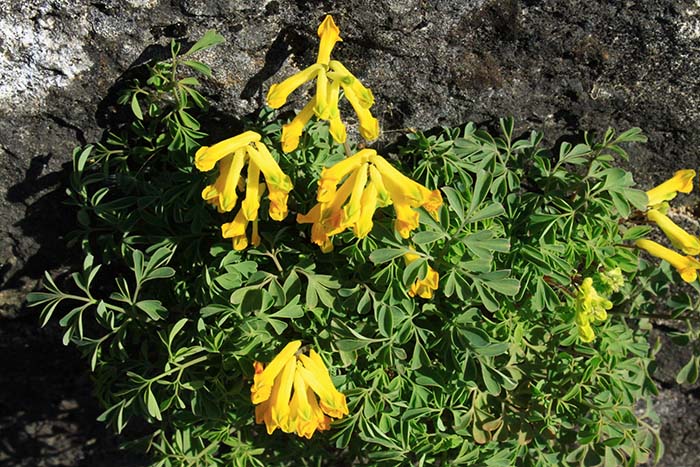
- USDA Growing Zones: 5 to 7
- Color Varieties: Yellow
- Sun Exposure: Part shade to full shade
- Soil Needs: Rich, moist, well-drained
Yellow Corydalis loves shady zones where the rich fern-like foliage can develop. The first bright flowers appear in mid-spring and last to early fall.
Corydalis Lutea forms yellow tubular petals growing on a cluster. Where the soil is rich and moist, the Yellow Corydalis will grow invasively. Don’t worry, you can always limit its spread by removing the unwanted sprigs from the ground.
14. Winter Heath (Erica carnea)
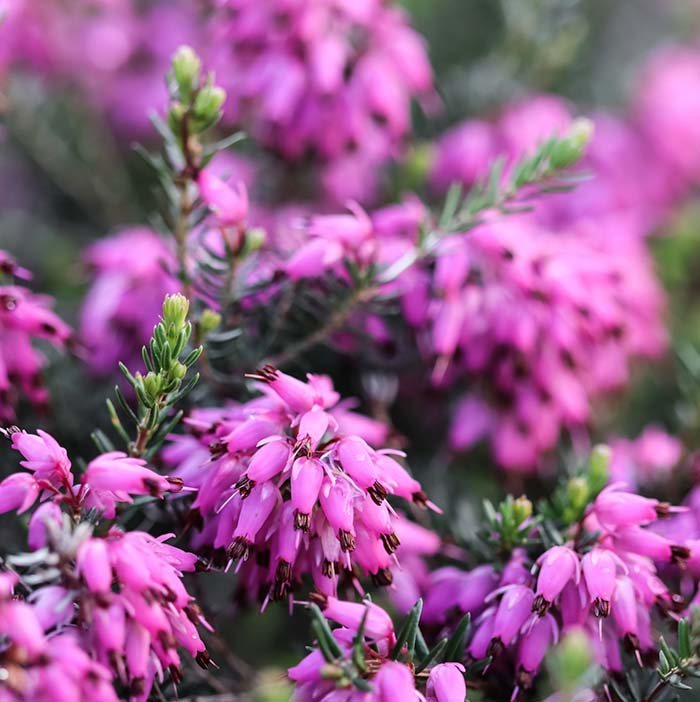
- USDA Growing Zones: 5 to 7
- Color Varieties: Pink
- Sun Exposure: Full sun to part shade
- Soil Needs: Sandy, loamy, acidic, medium moisture, well-drained
Winter heath is an evergreen ground cover that starts blooming in January. Full sun and organically rich and well-draining soil are the perfect conditions for this plant to grow and bloom till the end of spring.
The tubular pink petals form a rich cluster over bright green needles.
15. Stewartstonian Azalea (Rhododendron ‘Stewartstonian’)
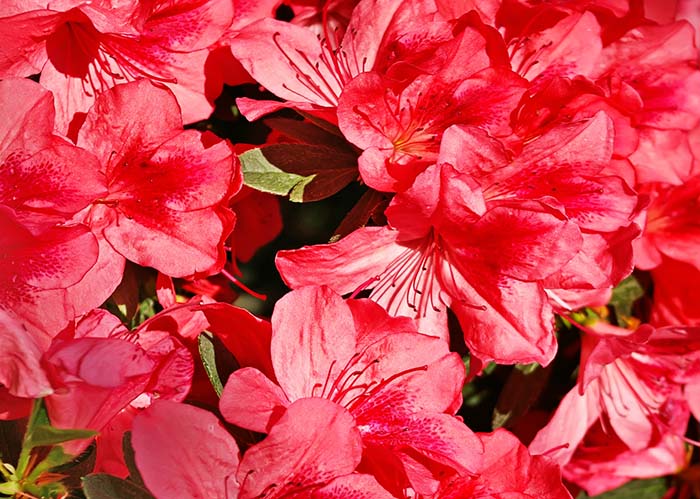
- USDA Growing Zones: 5 to 8
- Color Varieties: Orange-red
- Sun Exposure: Part shade
- Soil Needs: Rich, humusy, acidic, medium moisture, well-drained
Dark green leaves and orange-red flowers blooming shrub! The gorgeous Stewartstonian Azalea shrub amazes with delicacy and beauty.
The flowers usually bloom in April and unfortunately don’t last for long. This perennial shrub requires partial shade, rich soil and medium moisture to feel well. Maintenance is low- just clean the faded petals and prune them to shape after the flowering phase ends.
16. Golden Oriole Azalea (Rhododendron ‘Golden Oriole’)
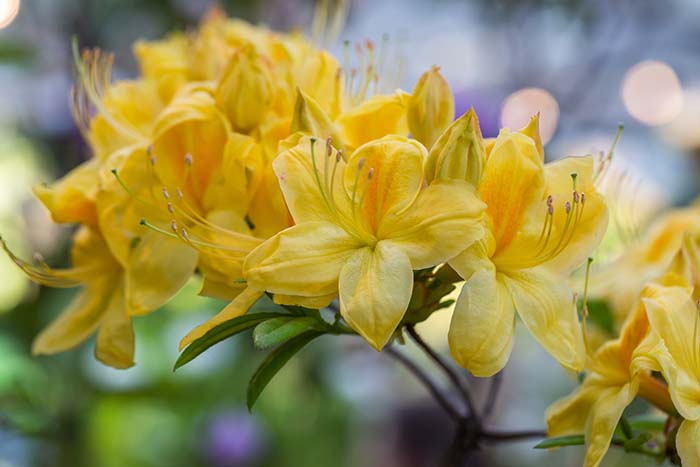
- USDA Growing Zones: 5 to 8
- Color Varieties: Yellow-orange
- Sun Exposure: Full sun to part shade
- Soil Needs: Rich, acidic, evenly moist, well-drained
The shrub Golden Oriole Azalea blooms with delicate yellow-orange flowers. They appear in early spring and attract bees, hummingbirds and butterflies.
Like all other kinds in the Azalea family, the leaves of this one also turn red-orange in autumn. Golden Oriole Azalea likes medium moist that can be maintained if a layer of mulch is added around it.
17. Korean Spice Viburnum (Viburnum carlesii)
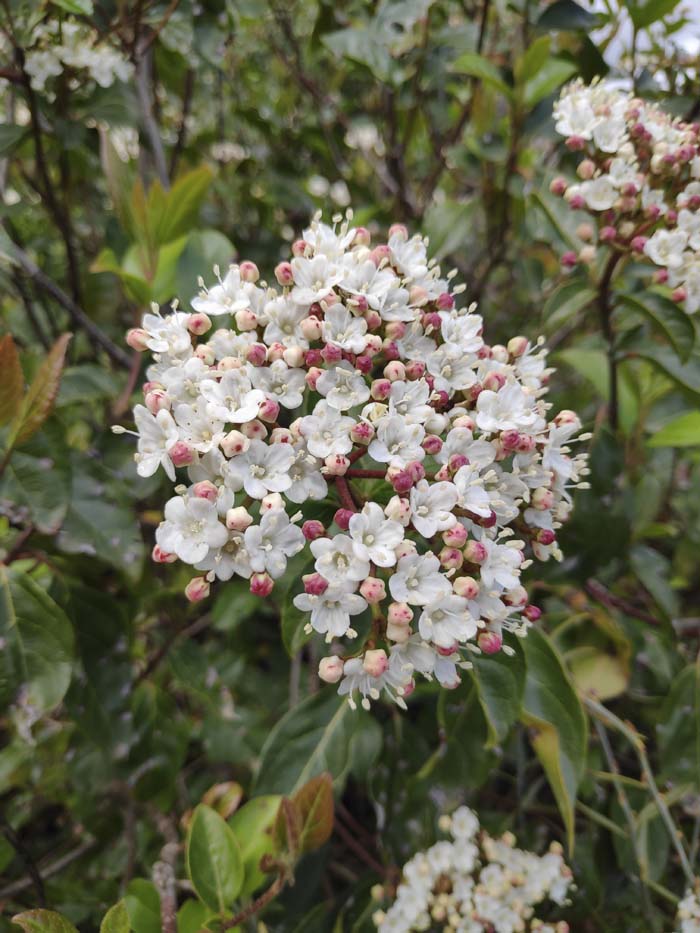
- USDA Growing Zones: 4 to 7
- Color Varieties: Pinkish-white
- Sun Exposure: Full sun to part shade
- Soil Needs: Average, medium moisture, acidic, well-drained
Isn’t the Korean Spice Viburnum a magical flower? In addition to being very delicate, it also spreads uncomparable fragrance from March to end of April.
The tiny white flowers which first appear as pale pink buds accumulate on a round cluster on a tall stem.
Its leaves remind a lot of the leaves of Azalea when it comes to their glaze but they are bigger. Unlike the Azalea family, Korean Spice Viburnum doesn’t like wet soil so make sure that the ground you plant it is well-drained.
18. Flowering Quince (Chaenomeles speciosa)
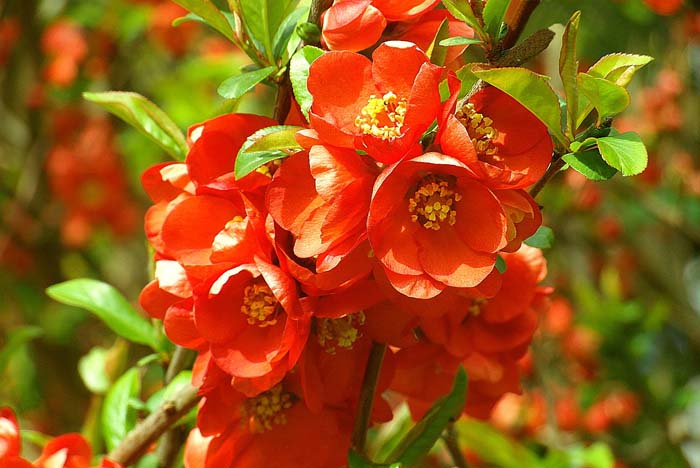
- USDA Growing Zones: 4 to 8
- Color Varieties: Red
- Sun Exposure: Full sun to part shade
- Soil Needs: Loamy, well-drained
The Flowering Guince is a popular fence shrub that enjoys its rich orange blooms from March to April.
The petals are five forming a small round flower that opens before the entire foliage is unfurled. Once the blossoms fade away, yellow-green fruits replace them. Maintenance is fairly low as long as it is placed in full to partial shade. To shape the plant, prune it once the blooming phase is over.
19. Japanese pieris (Pieris japonica)
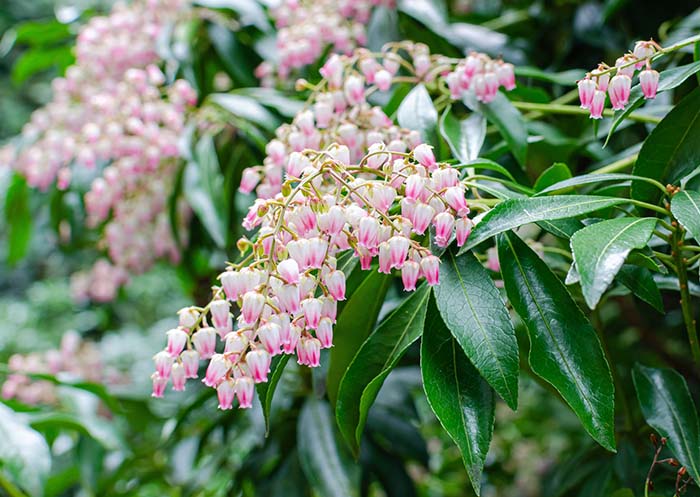
- USDA Growing Zones: 5 to 8
- Color Varieties: White, pink
- Sun Exposure: Full sun to part shade
- Soil Needs: Rich, medium moisture, slightly acidic, well-drained
This spring-blooming flower is also known as Lily of the Valley Bush and Andromeda. It starts blooming in March with heavy clusters formed by tiny bell-like petals. Their color is white with pink stripes running at the periphery.
Maintenance of this bush requires regular cleaning of the faded flowers which will encourage growth of new ones and will keep the attractive look of the plant.
20. Japanese Rose (Kerria japonica)
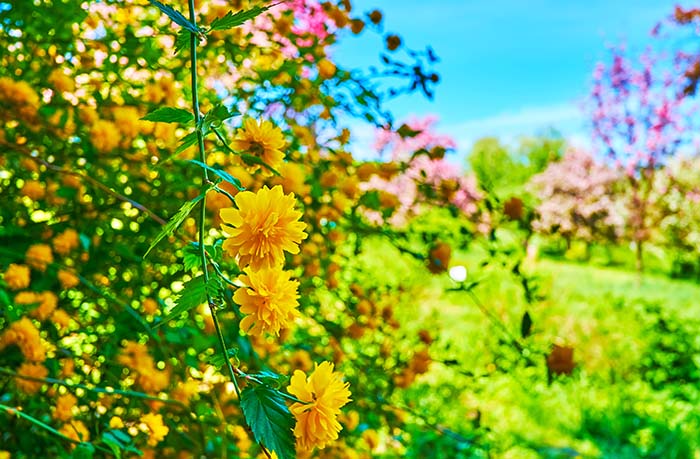
- USDA Growing Zones: 4 to 9
- Color Varieties: Yellow
- Sun Exposure: Part shade
- Soil Needs: Average, medium moisture, well-drained
Japanese Rose is a shrub blooming with five-petaled yellow flowers. Although it doesn’t belong to the Rosa genus, the blossoms resemble the shape of a typical rose and that gives it the name.
Although the Japanese Kerria does not require much maintenance, you can encourage it to bloom also in late summer if you often remove the suckers and prune for shape or control the height just after its spring flowering is over.
The Japanese Rose grows best in part shade and when watering is regular and overwatering controlled.
21. Yellow Alyssum (Aurinia saxatilis)
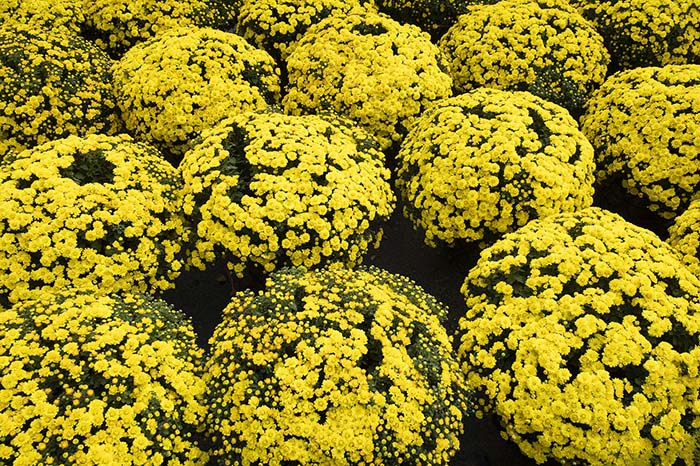
- USDA Growing Zones: 4 to 7
- Color Varieties: Yellow
- Sun Exposure: Full sun
- Soil Needs: Sandy, dry, well-drained
Yellow Alyssum or commonly known as basket-of-gold is an attractive perennial plant blooming from April to May.
It forms clusters of tiny yellow flowers over bouquet-shaped blue-gray foliage to create an impressive floral display in spring.
You can encourage reblooming of the Yellow Alyssum by cutting the plant back by a third to half after flowering is complete.
This plant is prone to reseeding which makes it a preferred ground cover plant despite its bad smell.
22. Garden Rock Cress (Arabis caucasica)
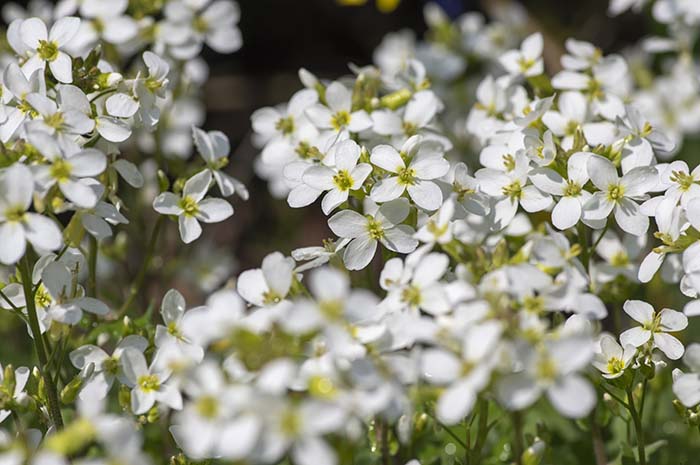
- USDA Growing Zones: 4 to 7
- Color Varieties: White
- Sun Exposure: Full sun
- Soil Needs: Sandy, dry, well-drained
Rock Cress likes the sunny spots where its blooms can create a white cascade. It is a low-growing ground cover plant that tolerates heat and drought hence many people like to plant it in their rock gardens.
This flower kind is preferred for one more reason- it smells adorable and attracts bees and butterflies. Once the blooming phase is over, you can continue admiring the dense carpet of its foliage by cutting the faded blossoms.
23. Candytuft (Iberis sempervirens)
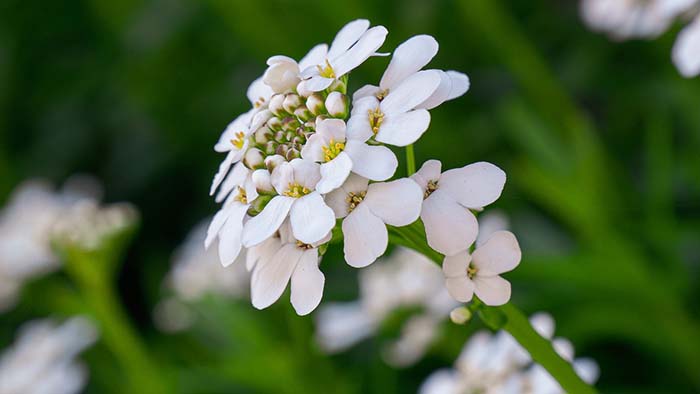
- USDA Growing Zones: 3 to 8
- Color Varieties: White, pink
- Sun Exposure: Full sun
- Soil Needs: Medium moisture, well-drained
Candytuft is a ground cover that likes full sun and tolerates planting in rock gardens, borders and even containers.
Its name comes from the sweet look of the four-petaled flowers forming a cluster. They appear in March and can re-bloom to May with white flowers. Once they mature, their color turns light pink.
The dark green foliage is evergreen and ensures a living carpet in the garden for the rest of the year. The best spot for the Candytuft is a sunny place where the soil is well-drained. Maintaining the plant requires cutting it back by half once the flowering phase is over.
24. Sea Thrift (Armeria maritima)
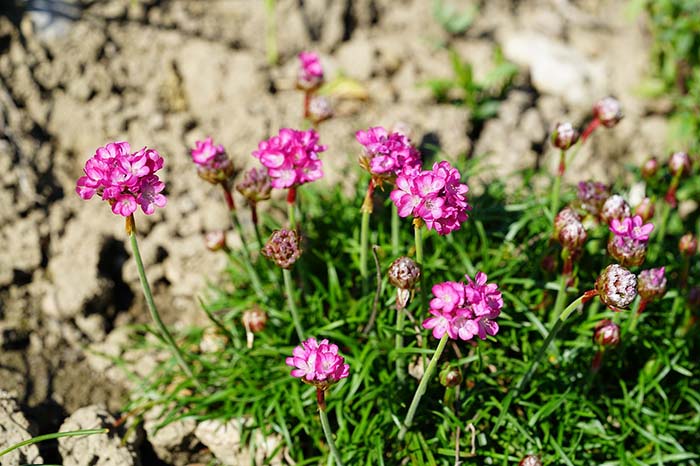
- USDA Growing Zones: 4 to 8
- Color Varieties: Pink, white
- Sun Exposure: Full sun
- Soil Needs: Dry, infertile, well-drained
Commonly known as Sea Pink, this spring-blooming flower is very compact. It resembles in pink blossoms that sit on bare stalks surrounded by needle-like foliage.
This plant is perfect for borders and rock gardens where overwatering is impossible. Full sun is a precondition for blooming and even reblooming in summer.
25. Woodland Phlox (Phlox divaricata)
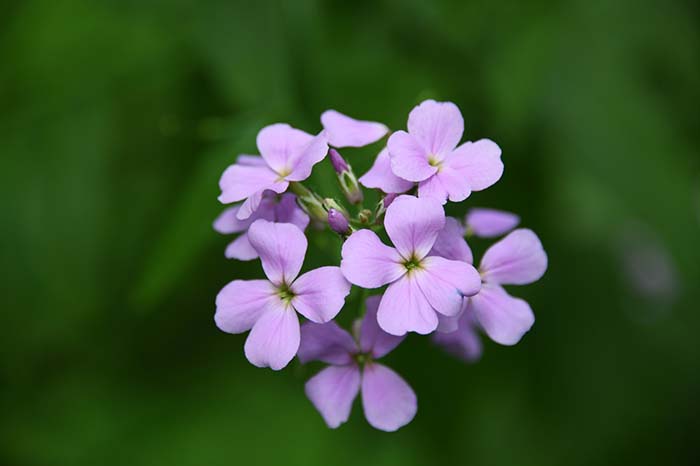
- USDA Growing Zones: 3 to 8
- Color Varieties: Rose, lavender, violet-blue
- Sun Exposure: Part shade to full shade
- Soil Needs: Rich, moist, well-drained
Woodland phlox likes the shady spots where the five-petaled flowers stretch on a cluster. Their color varies from rose pink to violet-blue and enjoys in April.
This kind is a wildflower that grows in the shades of the forests so it prefers moisture. To keep the soil wet cover the soil around it with a layer of mulch that will retain it moisturized.
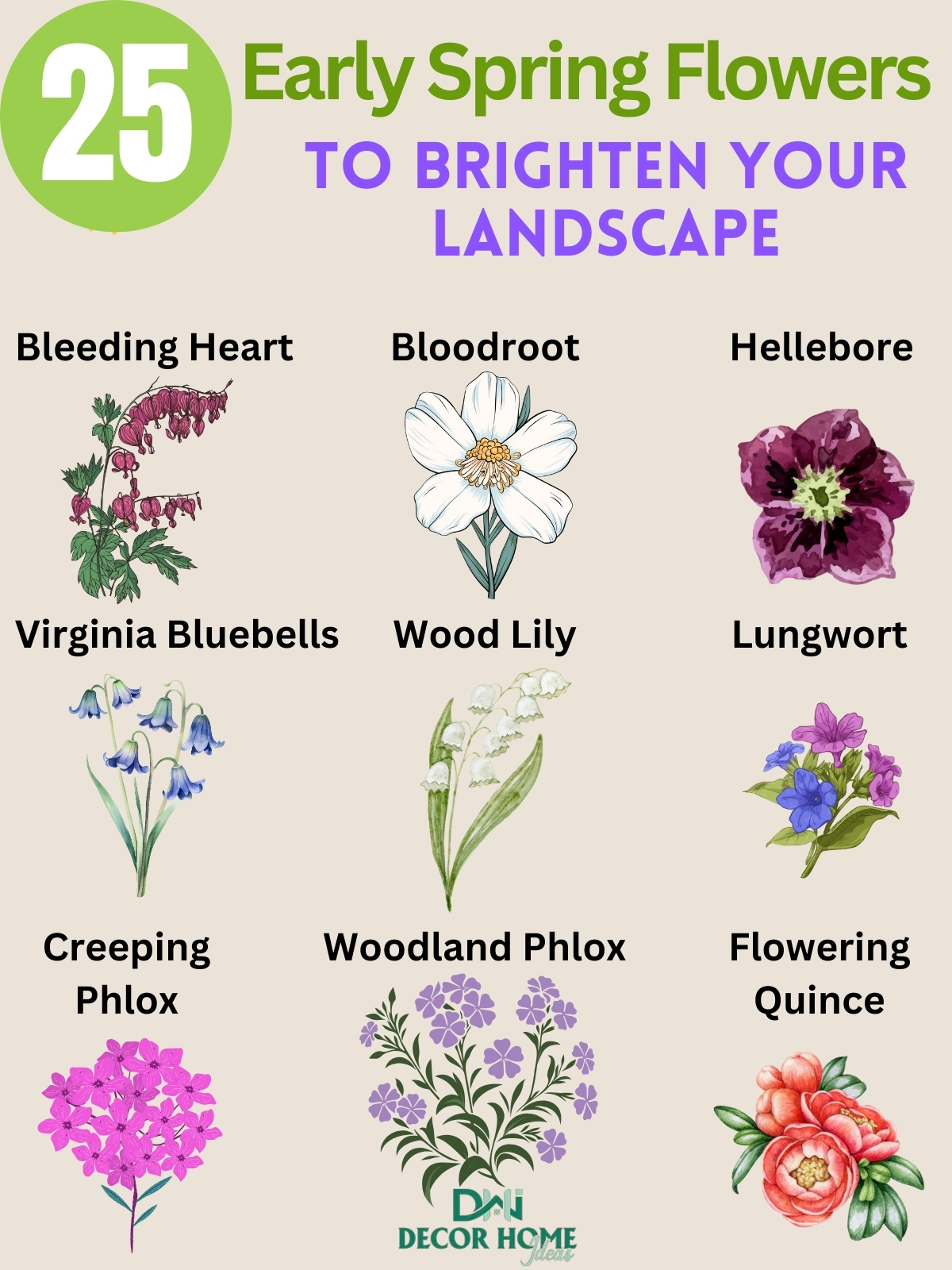
Welcome the season with these vibrant early spring flowers that bring color after winter’s chill.
Bleeding hearts and Virginia bluebells add delicate beauty, while hellebores and flowering quince offer bold hues.
Woodland phlox and creeping phlox create lush ground cover, and wood lilies add elegance. Perfect for brightening up your garden and signaling the arrival of spring!

